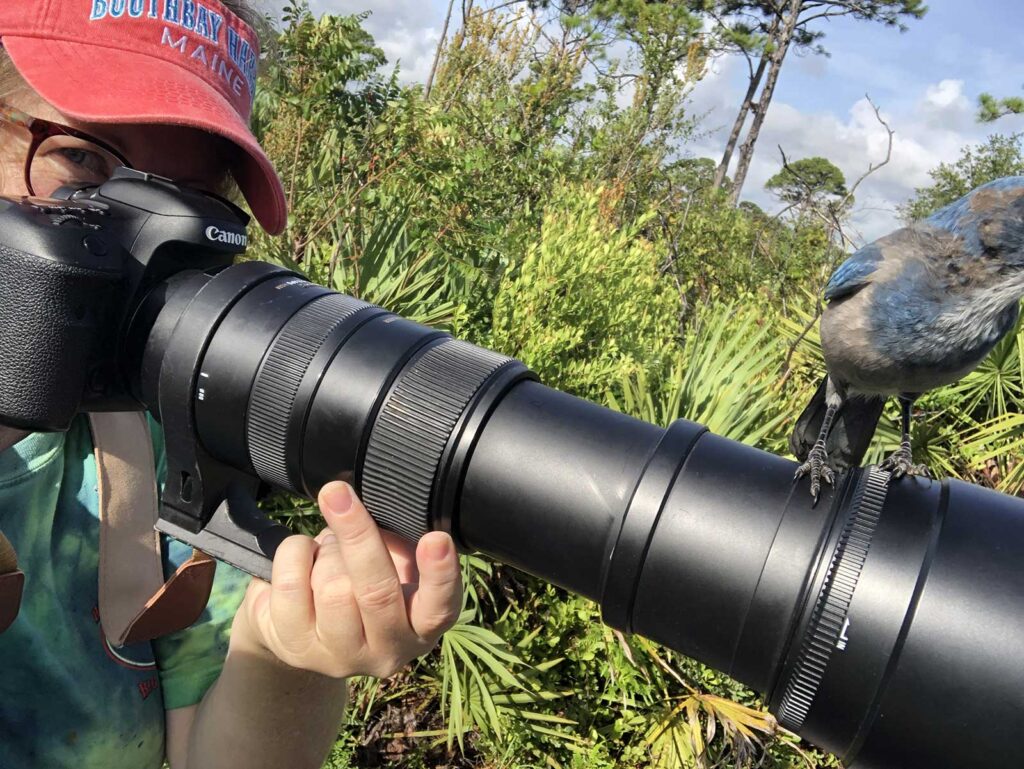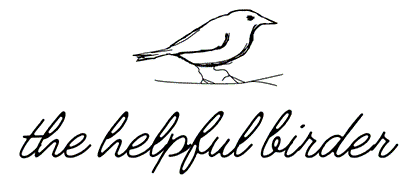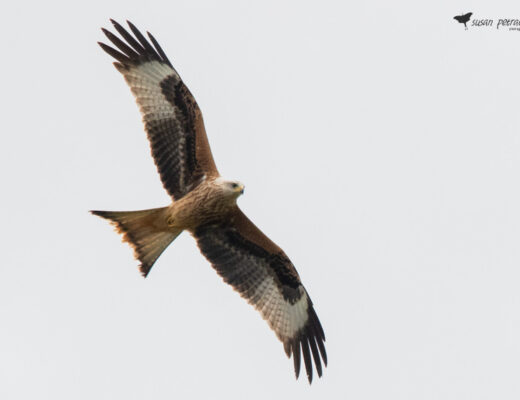It’s funny, I got into birding AFTER I bought my first camera. I didn’t set up to be a bird photographer; I just wanted a DSLR camera to use. I bought a Canon T4i and then realized I needed to take pictures of SOMETHING other than just my kids and pets. That’s when I met my friend Rachel, who told me about the Viera wetlands…and I was on my way to taking pictures of birds nearly every day.
It wasn’t long before my 300mm kit lens wasn’t long enough, and I upgraded to a 500mm lens. Then my T4i wasn’t robust enough, so I upgraded my camera body. I needed a tripod for video and for long waiting periods, and a shutter release for long exposure, and a bag to carry my gear…
You see where this is going, right?
Well, here’s my current bird photography gear collection.

Camera Body
My current camera body is Canon 7D Mark II. It’s a great camera for wildlife, with an extremely high burst rate and the ability to shoot quality video as well as photos. I set it up to use back button focusing, spot metering, and I always shoot in RAW with manual settings.
(If you haven’t learned to shoot manual yet, please do yourself a favor and learn how! Start with learning about the exposure triangle in this post at studiobinder.com.)
This is a great camera for birding! Its fast burst mode means you can get a lot of photos in a short timeframe – the “spray and pray” method. But it’s also very easy to take a single shot, or 2-3 frames, when you have more time to plan the shot. The 7D Mark II is a crop-sensor camera, which means you get 50% more distance out of your lenses. For example, and 500mm telephoto lens actually produces a zoom of 750mm (500mm times 1.5 = 750mm).
To be honest, this is going to be the next thing that gets replaced. I’m dying for a mirrorless and full-frame camera, and one that can handle low-light conditions better than my current body. I plan to either get the Canon R5 or R3. Both have the ability to track a bird’s eye and keep focused on the eye even while the bird is moving.
For now, I manage the noise produced in some of my images by using Topaz DeNoise AI. It’s an incredible piece of software and does a great job of removing noise without sacrificing sharpness.
Camera Lens
For wildlife, I almost exclusively shoot with my Sigma 150-500mm telephoto lens. There’s actually a newer version that goes from 150-600mm which you can find here. This lens gives you so much bang for the buck. No, it’s not as good as a Canon white lens, or a prime lens – or a prime Canon white LOL. But you’re going to pay a LOT more for those lenses. If you don’t have that kind of budget, and/or if you’re just getting started, the Sigma lenses will give you the distance you need to capture birds that are far away.
As most birds are typically far away!

I have a few other lenses that I use for other purposes, including a Canon macro lens that I sometimes use for insects when it’s cold and they are slow-moving. But I almost always use the 150-500mm for bird photography.
Landscape Lens – As a side note, for landscapes and product photography I usually use my Canon 35mm macro lens. It’s a fixed length, but it’s versatile in that it can do both macros (up close photography with a 1:1 ratio) and regular photography. That means I’m not limited by how close I am to a subject. I also use it for food photography, something I’m trying to learn more and get better at doing.

Camera Bag / Backpack
I like to travel, so I needed a bag I could use to carry my gear on a plane without checking it. I decided on the Lowepro Flipside backpack because it has all the room I needed, can carry a laptop, and fits in the overhear bin or under the seat in most airplanes.
With it, I can carry two camera bodies (I still use my T4i as a backup), my telephoto lens, 2-3 other lenses, cleaning supplies, my laptop, and various other items.

Tripod
After I upgrade my camera body, a tripod will likely be my next purchase. The one I have isn’t sturdy enough for the long lens. Last spring in Texas, I borrowed a sturdier one with a gimbal head from the woman leading the workshop, and now I’m sold.
For now, I have the Oben AC-1321. Honestly, though, it’s better for studio work than field work. I don’t recommend it for birding.
Fortunately, most of the time I don’t even use a tripod, especially when photographing birds in flight.
Cleaning Supplies
For regular cleaning I have a Lens Pen and and air blower. I keep both in my backpack so I know where to find them. I also make sure to have lots of microfiber cloths!
What Else Do I Need?
I wish I could say I’m done spending money. But as you’ve seen above, I’m already hoping to upgrade my camera body and to get a new tripod. Here are some other “down the road” items I would like to have, but I’m not yet ready to spend money on!
- Scope – a scope is really useful for birds that are super far away. This is common at Merritt Island NWR with the over-wintering ducks. It also would have been useful for the neotropic cormorant that was there a few months ago! I haven’t researched these so I don’t know what brand/model. Probably not Swarovski, unless I win the state lottery!
- Digiscope Phone Adapter – with an adapter, it’s pretty easy to take pictures through a scope using just your cell phone. I’ve been lucky enough to be allowed to try it on other peoples’ scopes. At other times, I’ve tried to do it without an adapter, but it’s much harder. These are cheap, so if I get a scope, I’ll get this at the same time
- A prime lens – I would really like a high quality, lighter-weight telephoto prime lens. Prime lenses don’t zoom in and out; they have a fixed distance, like 500mm. A lens that lists a range, like 150-500mm, is a zoom lens.
- A mounted wildlife camera – I would like to put a wildlife camera on my bird feeders. Again, not super expensive. Right now, I don’t want to share my WiFi bandwidth since I work from home, so I haven’t bothered.
That’s it! Now you know what I use to shoot my photos. If you click any of the links above, they’ll take you to Amazon. If you make a purchase, I’ll get a very small commission and it shouldn’t cost you any extra. Maybe if enough of you do that, I’ll be able to afford that R5. 😉
What bird photography gear do you use and recommend?

